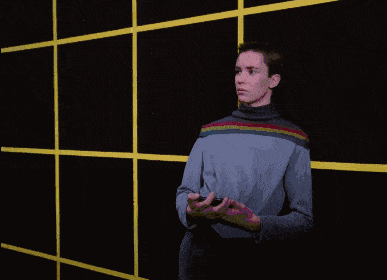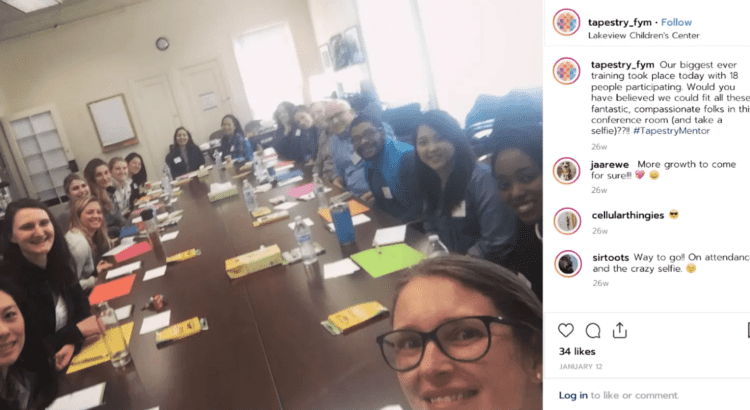If you’ve been following along in the story of my dissertation research, you’re probably enjoying getting to know Tapestry and their model for “starting with the work” in order to be and to become a community.
But if you’re like me, or even like Tapestry’s co-directors as their organization has developed, then it might be hard for you to further understand the nature of this “church that doesn’t look like a church.” In the new episode of Becoming Tapestry, I explore this problem and propose a way of thinking about it.
I shared in Episode 1 that social theorist Bruno Latour is skeptical of our often unnoticed belief that calling a group by a particular name automatically tells us something about its members. It’s better to stick close to the members themselves and the interactions they have, he says.
That focus on interaction can help us appreciate an insight from another social theorist, Doreen Massey. It’s about space.
Space is more than connected locations, more than the material or even digital places where people hang out. It isn’t empty. It isn’t flat. It isn’t a Euclidean grid to be filled like the Star Trek holodeck.

“Space is a social practice,” says Massey. It’s distinct people relating to each other, often across significant differences, and often according to some unpredictable trajectory of change and becoming. Space is a great “pin cushion” of interconnected “stories-so-far.”
In my story of Tapestry, the extension from understanding the organization and its mentor teams as connected groups-in-formation (Latour) to connected spaces convened by those group members (Massey) lays the groundwork for tackling what feels to me like the biggest challenge facing faith leaders in a time of disconnection.
How do we understand religious belonging when people are religiously disaffiliating? How do we meaningfully and respectfully include people who feel strongly that they don’t want to be labelled? How do we understand the impact of faith on people’s lives without resorting to the often toxic binary of insider/outsider?
Here’s my take:
If we pay attention to spaces rather than groups, we start to emphasize relationship as it is practiced rather than how it is represented by fields in a membership database. We engage according to who is showing up in the moment rather than who we wish had showed up—and by their presence and contributions rather than by their membership status.
Here’s the most important part:
The boundaries of spaces, in this way of thinking about them, are much more amorphous and flexible than in our typical ways of describing affiliation: member, non-member, visitor/lead/prospect/member-in-training.
We hold space together simply by encountering one another. We do it all the time, and with people of all persuasions.
So when our lens shifts from what happens in the church building among the members of that church (or the online/hybrid service for the worshipers) to what happens when religious people engage in the other spaces of their lives, we don’t need new language or analytic tools. New spaces just mean slightly reconfigured orientations to the religion(s) in question.
When faith, theirs or others’, comes to bear on the spaces they’re moving through, we should simply note the connection. The spatial metaphor of adjacency, of two things being close to or next to or connected to each other, captures how such spaces are experienced in these moments.
- When the Tapestry co-directors unpack how their background as religious leaders shaped the founding of their organization …
- When Tapestry teams “borrow” church kitchens or church playgrounds for their meetings …
- When a Tapestry facilitator uses a popular religious education format to develop the story of how religious concepts have informed the “multi-faith and no faith” guiding principles of the community …
- When Tapestry turns a church yoga night into a mentor recruiting event …
- When a beloved Tapestry mentor dies and the team gathers at that same church for her funeral …
- When Tapestry facilitates a partner organization turning a church sanctuary into a traveling exhibit space …
… we recognize something not exactly religious, but certainly not secular or entirely non-religious. I call it faith-adjacent space. Faith is nearby. Not irrelevant. Visible, as it were, but visible among other salient details as well.
At a time when so many of us are reevaluating our relationship to organized religion, to institutions more broadly, and to our daily practices of relationship and presence, it’s very helpful to have ways of describing religious encounter that don’t center ideas of institutional membership and don’t force some kind of “religious identity acid test” onto every interpersonal interaction in our pluralistic society.
I hope you’ll try out this idea of faith-adjacency as one such way of shifting your understanding of the religious/non-religious/multi-religious spaces you move through each day.
It just might free you up to focus on the relationships you form in those spaces—and all the potentialities those relationships hold.
All this to say: Episode 2 of Becoming Tapestry is now available in your podcast feeds.
